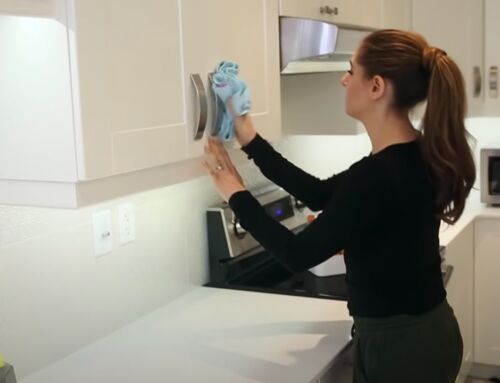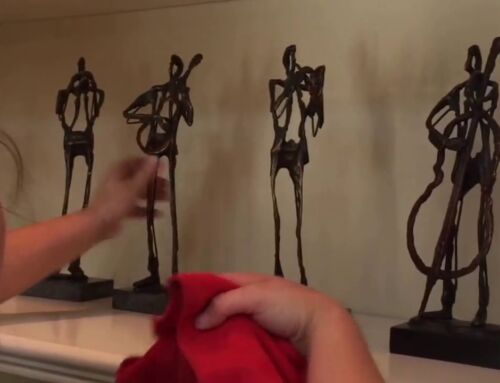In the Mile High City, the dry climate, rapid weather changes, and urban activity create a unique cleaning challenge for homeowners. Despite weekly routines, certain areas in Denver homes are routinely overlooked—leading to buildup of dust, allergens, and grime that can affect your home’s hygiene and appearance. In this article, we uncover the most commonly neglected cleaning zones and provide expert home cleaning tips Denver residents can use to maintain a truly spotless space. Whether you’re a first-time homeowner or a seasoned DIY cleaner, this guide is for you.
Why Overlooked Areas Matter in a Denver Home
Denver’s semi-arid climate means dust settles quickly and can easily infiltrate crevices and corners. Add to this the fast-paced lifestyle of many Denverites, and it’s no surprise that busy schedules lead to cleaning shortcuts. However, ignoring these hidden or hard-to-reach places not only diminishes your home’s cleanliness but also contributes to allergies and poor indoor air quality.
Professional cleaners like Organic Maids are trained to catch what most people miss—ensuring even the most forgotten areas are spotless. Their attention to detail, comprehensive checklists, and hard-to-reach surface care ensure your home is cleaned with precision.
Baseboards: The Dust Collectors Near the Floor
Baseboards are typically skipped in weekly cleanings because they’re low to the ground and don’t appear dirty from a distance. However, they collect dust, pet hair, and grime over time, especially in a city like Denver with plenty of dry air and foot traffic.
Tip:
Use a microfiber cloth dampened with a gentle cleaner or a vinegar-water solution to wipe down baseboards every two weeks. If vacuuming, use a brush attachment to loosen dirt first.
Light Switches and Doorknobs: High-Touch, Low-Priority
These are some of the most touched surfaces in any home—and also some of the most neglected during cleaning. They can harbor germs, bacteria, and oils from skin contact.
Tip:
Make a habit of wiping light switches, doorknobs, and cabinet handles with disinfectant wipes or a diluted rubbing alcohol solution during your weekly cleaning routine.
Ceiling Fans and Light Fixtures: Hidden Above Eye Level
Infrequently used, yet prone to accumulating dust, ceiling fans can spread allergens every time they’re turned on. The same goes for light fixtures, which can become dim and dingy due to settled debris.
Tip:
Use an extendable duster or microfiber mop to clean fan blades and light fixtures monthly. Lay down an old sheet to catch falling dust during cleaning.
Air Vents and HVAC Grilles: Circulating Dust Unnoticed
Denver homeowners often forget to clean air vents, but these components contribute directly to air quality in your home. Uncleaned vents can distribute dust and allergens throughout every room.
Tip:
Vacuum vent covers regularly using a brush attachment. Remove and wash them with soap and water every season. Consider hiring professionals for deeper duct cleaning annually.
Behind and Beneath Appliances: Out of Sight, Out of Cleanliness
The area behind your refrigerator, oven, or washer often harbors food crumbs, grease, lint, and dust. Ignoring these zones may also attract pests or cause unpleasant odors.
Tip:
Carefully move appliances (or hire someone to help) every few months to sweep and mop beneath them. Use degreasing cleaner for sticky messes.
Cabinet Tops and Inside Drawers: Cluttered and Forgotten
Upper kitchen cabinets and drawer interiors are often missed because they don’t show dirt unless inspected closely. Over time, the tops accumulate grease and dust while drawers collect crumbs and spills.
Tip:
Wipe cabinet tops with a degreasing solution quarterly. Use drawer liners and vacuum them periodically to keep crumbs and debris under control.
Shower Curtains and Liners: A Breeding Ground for Mildew
Bathrooms are naturally humid environments—ideal for mildew and mold, especially on fabric or plastic shower curtains and liners.
Tip:
Wash fabric curtains in a gentle cycle monthly, and replace plastic liners every 3–4 months. Alternatively, spray liners with a mold-inhibiting solution weekly.
Under Furniture: Dust Havens in Living Rooms and Bedrooms
From under the couch to beneath the bed, these spaces are often neglected simply because they’re not in plain sight. Unfortunately, these are also the areas where dust bunnies and pet hair love to hide.
Tip:
Use a vacuum cleaner with a low-profile head or a dust mop to reach under furniture. If items are rarely moved, schedule quarterly cleanings for these spots.
Professional Touch: How Organic Maids Addresses What You Miss
While Denver homeowners juggle careers, family, and outdoor recreation, deep cleaning often falls to the wayside. That’s where Organic Maids steps in. Their professional cleaning team is trained to address every overlooked area house cleaning Denver CO residents commonly miss. Here’s how they go above and beyond:
-
Checklists for every room to ensure no corner is skipped
-
Detailed attention to hard-to-reach surfaces like fan blades, baseboards, and vents
-
Pet-friendly, non-toxic cleaning products that maintain both cleanliness and safety
-
Customized recurring cleaning plans suited to Denver’s dry, dusty environment
-
Move-in/move-out deep cleans that include behind appliances, inside cabinets, and more
Hiring Organic Maids means never having to second-guess what got cleaned. It’s peace of mind wrapped in a dust-free, sparkling home.
Conclusion
Even the most diligent homeowner can miss a spot—especially when juggling life in a bustling city like Denver. But overlooking small areas week after week adds up over time, affecting everything from your home’s appearance to your indoor air quality. From baseboards and fan blades to air vents and doorknobs, this guide shines a light on the home cleaning tips Denver residents need most.
If you’re ready to level up your cleaning game—or delegate it entirely—Organic Maids has the detailed cleaning checklists and professional-grade service to ensure no speck of dust is left behind.





